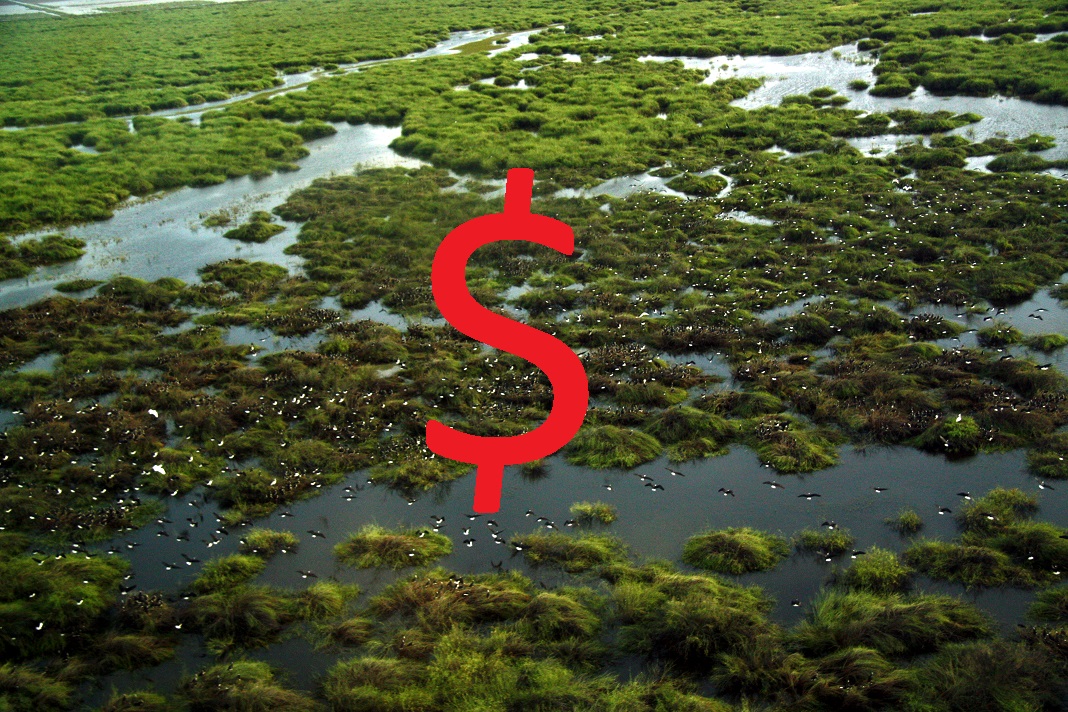
With the Federal election verdict widely attributed to ‘quiet Australians’ favouring the economy over the environment, one key point has been missed in the wash-up analysis. Rather than supposedly avoiding a gaping economic hole required to fix the environment through the public purse, the modelling incorrectly assessed the impacts, costs and benefits of the environment. Current economic modelling predominantly relies on a confined definition of economy: one focused so narrowly that it fails to measure long-term environmental benefits or costs.
Inadequate or no environmental action by governments often comes down to concern about short-term economic costs. This approach ignores the externalities, the long-term impacts, or even costs of the doing nothing option. This applies to nearly all pressing environmental issues facing us. The two most prominent currently are climate change and water policy. But the same economic inadequacies also play out for other environmental issues, including the proliferation of plastic in our oceans, the biodiversity crisis, land clearing, pollution and establishment of marine parks.
In not effectively addressing environmental problems, governments are increasingly failing the broader public, too often caving in to the influences of particular industries, with decisions aligned with short political cycles. This is neither good economics nor responsible environmental stewardship. And the real losers are our children and grandchildren who pay the cost of this short termism. Sixty year olds like me get the short term benefits while defraying long-term economic and environmental costs to future generations. It’s no wonder that the latest Deloitte survey of Millennials around the world found increased pessimism. And although climate change, protecting the environment and natural disasters were top of their list of personal concerns, only 30 per cent were worried.
More often than not economics is the hand brake on environmental action. But what of the environmental costs of doing very little? Extreme weather has dried up rivers and dams and caused intense bush fires in places they haven’t been. Water restrictions have arrived in Sydney. Convince Tasmanian beekeepers that there is no cost. Unprecedented bush fire and drought conditions devastated the apple isle’s leatherwood trees which supply flowers for up to 70 per cent of their honey production.
And what will happen to the future tourist industry of the wet tropics? The forests’ extraordinary biodiversity, covering only a tenth of one percent of Australia has half our native species, but they are in rapid decline with our increasing temperatures. The flagship of the wet tropics, the amazing lemuroid possum, may be extinct in four years. And we haven’t even discussed the Great Barrier Reef, Adani’s impact on the threatened black-throated finch, or fish kills in the Darling?
Meanwhile, Australians enjoy a very high quality of life, ranked third globally in 2017, measured by the United Nations’ Human Development Index. And yet, most of our environmental metrics, number of threatened species, health of our rivers, land cover condition, temperatures, ecosystem health, extreme weather events are careering in the opposite direction. Unlike climate change, our nation bears almost sole responsibility for most of these.
We are a clever country and we can solve these problems or at least do a lot better. We are global leader in environmental science, reflected in our increasingly improving predictions of future environmental scenarios. We have decades and sometimes centuries of data on long-term environmental costs. For example, if we were going to build Dartmouth Dam at the top of the River Murray or Pindari Dam at the top of the Darling River today, then any comprehensive economic and environmental modelling would have to factor in the real cost of spending more than thirteen billion dollars to fix the problems caused by these and other dams on the rivers of Murray-Darling Basin. And we are still a long way short of restoring the environmental health of these rivers.
We must better integrate economic and environmental factors for a sustainable future. The World Economic Forum, hardly a left wing think-tank, identified five of the top six risks to humanity as environmental, in terms of likelihood and impact in its 2019 Global Risk Report. They included extreme weather; natural disasters; failure of climate change mitigation and adaptation; water crises and; biodiversity loss and ecosystem collapse.
Australian industry is increasingly realising the urgency and not just in relation to climate change. As part of the shakeup after the Banking Royal Commission, major banks nailed their colours to the mast with their Australian Sustainable Finance Initiative released in March this year, aimed at not only core social issues but protection of the environment. Meat and Livestock Australia is promising that red meat production can be carbon neutral by 2030. More industries will feel the pressure as consumers increasingly interrogating an industry’s social licence to operate.
School children marching in the streets and picketing the last election should remind those in power that the next generation of voters will not tolerate the mortgaging of their future. From now on, development decisions affecting the environment have to incorporate potential economic and environmental costs of impacts over decades and perhaps centuries. It is no longer good enough to say we don’t know what will happen if we build more dams in northern Australia, fragment farming land with gas wells or lay waste to more Australian bush. We’ve done these experiments before and we know what they cost. And, there are more sustainable options for a clever country. It is no longer either the economy or the environment. We need to recognise both are essential but not the traditional short sighted economy that continually dominates politic decision-making and the airwaves.
Richard Kingsford is a professor at Centre for Ecosystem Science, School of Biological, Earth and Environmental Sciences, UNSW Sydney
